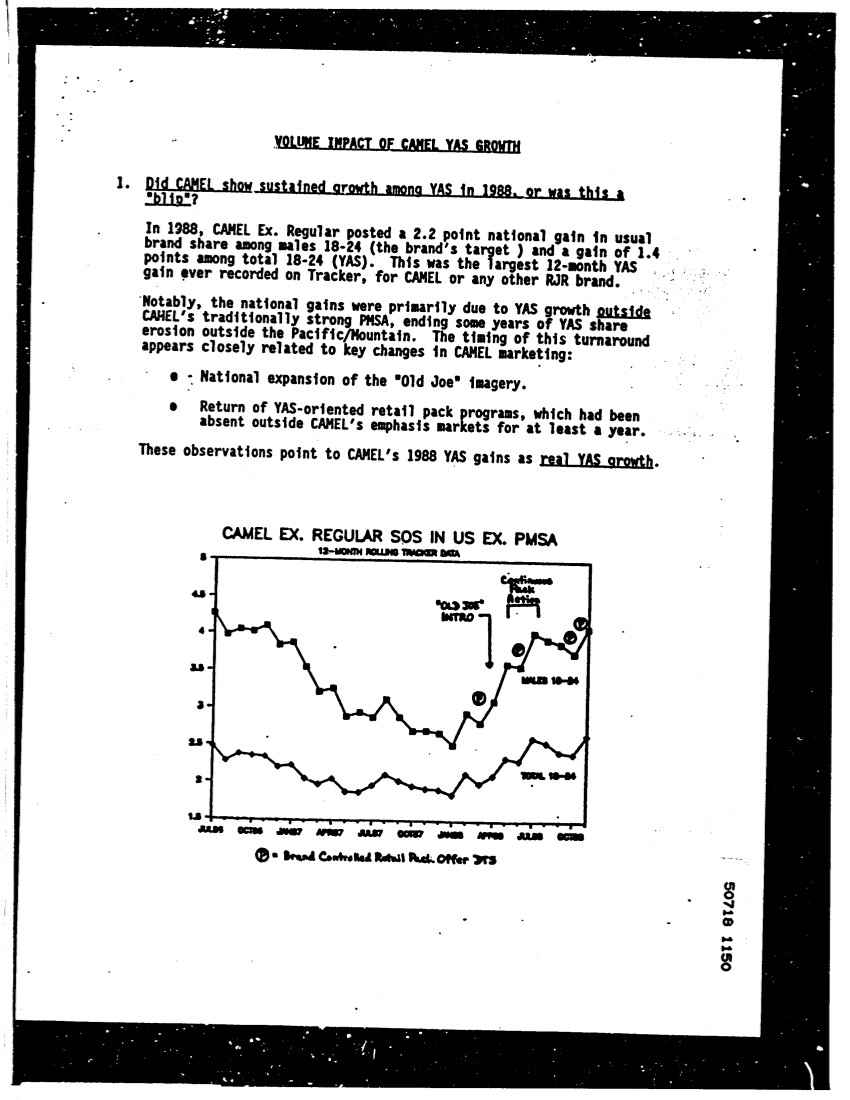

Tax increases on cigarettes in the 1980's were threatening to dramatically lower cigarette sales. That was the goal of the increase, to discourage tobacco use. Yet there was no additional legislation preventing unethical marketing strategies to counter the effect of the tax increase. This lack of legislation resulted in a vulnerable group to be aggresively targeted.
Tobacco companies looked at strategies to keep smokers smoking while at the same time attracting new smokers. In 1988 RJ Reynolds starting advertising with "Joe Camel", a cartoon character, obviously appealing to a young audience. A 1989 report from RJ Reynolds shows how the increase in market share under young adult smokers (YAS) was no coincidence. It shows how the increase was due to "Joe Camel" ads and price reductions, which are most effective on price sensitive consumers, which teens and young adults happen to be, teens up to three times more so than adult smokers (Chaloupka FJ, Cummings KM, Morley C, 2002).
A 1991 study looked at brand logo recognition by children aged 3 to 6 and found that "Approximately 30% of 3-year-old children correctly matched Old Joe with a picture of a cigarette compared with 91.3% of 6-year-old children (P. M. Fischer, M. P. Schwartz, J.W. Richards, 1991). It wasn't until 1997 that RJ Reynolds stopped the Joe Camel campaign, under pressure from public interest groups, congress and an impending trial.

Fischer PM, Schwartz MP, Richards JW, Goldstein AO, Rojas TH. Brand Logo Recognition by Children Aged 3 to 6 YearsMickey Mouse and Old Joe the Camel. JAMA. 1991;266(22):3145-3148. doi:10.1001/jama.1991.03470220061027
Chaloupka FJ, Cummings KM, Morley C, et al. Tax, price and cigarette smoking: evidence from the tobacco documents and implications for tobacco company marketing strategies. Tobacco Control 2002;11:i62-i72.